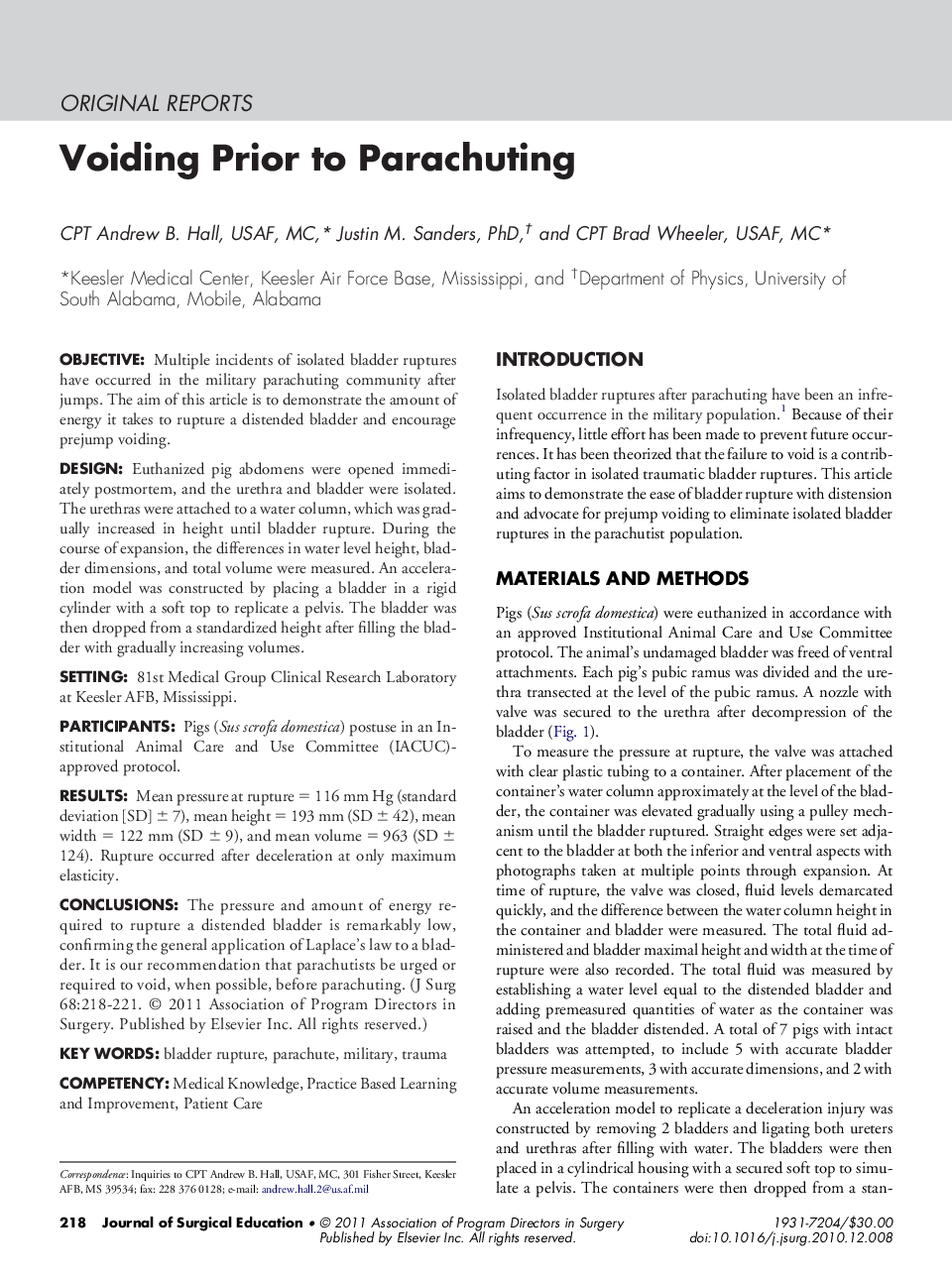| Article ID | Journal | Published Year | Pages | File Type |
|---|---|---|---|---|
| 4298394 | Journal of Surgical Education | 2011 | 4 Pages |
ObjectiveMultiple incidents of isolated bladder ruptures have occurred in the military parachuting community after jumps. The aim of this article is to demonstrate the amount of energy it takes to rupture a distended bladder and encourage prejump voiding.DesignEuthanized pig abdomens were opened immediately postmortem, and the urethra and bladder were isolated. The urethras were attached to a water column, which was gradually increased in height until bladder rupture. During the course of expansion, the differences in water level height, bladder dimensions, and total volume were measured. An acceleration model was constructed by placing a bladder in a rigid cylinder with a soft top to replicate a pelvis. The bladder was then dropped from a standardized height after filling the bladder with gradually increasing volumes.Setting81st Medical Group Clinical Research Laboratory at Keesler AFB, Mississippi.ParticipantsPigs (Sus scrofa domestica) postuse in an Institutional Animal Care and Use Committee (IACUC)-approved protocol.ResultsMean pressure at rupture = 116 mm Hg (standard deviation [SD] ± 7), mean height = 193 mm (SD ± 42), mean width = 122 mm (SD ± 9), and mean volume = 963 (SD ± 124). Rupture occurred after deceleration at only maximum elasticity.ConclusionsThe pressure and amount of energy required to rupture a distended bladder is remarkably low, confirming the general application of Laplace's law to a bladder. It is our recommendation that parachutists be urged or required to void, when possible, before parachuting.
